Review – Alpine A110R: Rough shell, white spirit
At Alpine Centre Soestdijk, I am handed the key card to one of three blue A110Rs, neatly lined up outside, for this review. An Alpine employee adds that this is indeed a “serious car. Needless to say, because I walk around the A110R and the carbon fiber glares at me. Not only the trunk lid, roof and hood, but even the wheels are made of the lightweight yet strong material. I swallow for a moment. Of course, you don’t want to be the one who accidentally takes a curb with these wheels. Maybe I shouldn’t have looked up the prices the night before anyway: about 4,000 euros. Per wheel. Whew.

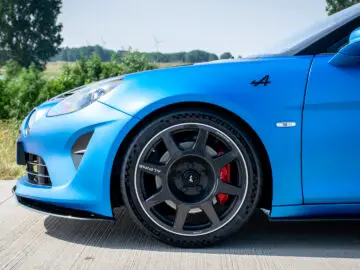

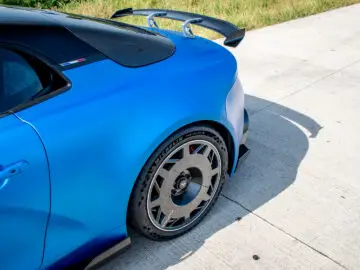
In harness
The 4.25-meter-long Alpine A110R breathes sportiness. After taking a detailed look at the exterior and studying and admiring every carbon fiber detail, I get in. I open the door and immediately the two extremely designed Sabelt bucket seats – again made of carbon fiber – catch my eye. As I lower myself into the seat, I prepare for a hard landing, but it’s actually not too bad. The cushions on the chairs are pleasantly soft, and I am instantly seated like a glove. Instinctively, I reach back left to grab the seat belt, but a regular three-point seat belt is nowhere to be seen in the Alpine A110R. It’s six-point racing harness or nothing.
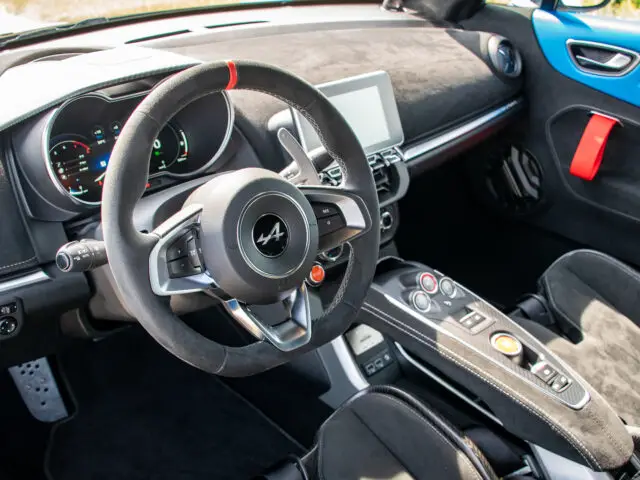
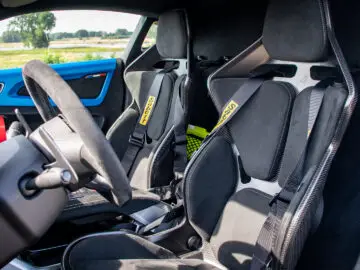

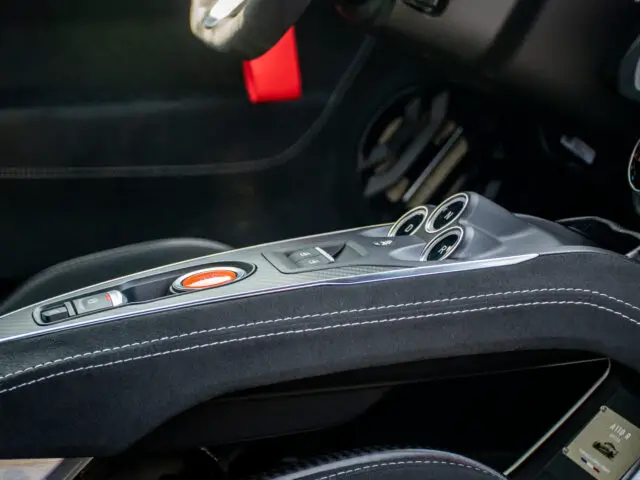
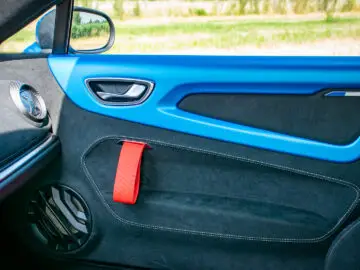
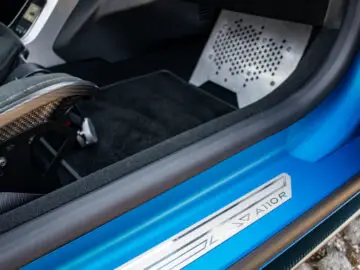
I pull the door closed with the racy red loop and grab the two belts that go over my shoulders. Then I click them into the appropriate attachment that sits between my legs. In total, the belts are fastened in six places in the car, but you have four central attachment points, two of which you click into place. This takes some getting used to and, of course, it takes more time than a regular three-point harness, but in return for this somewhat impractical feature, you are really well harnessed in the seat. Your body really doesn’t go anywhere during the better cornering.

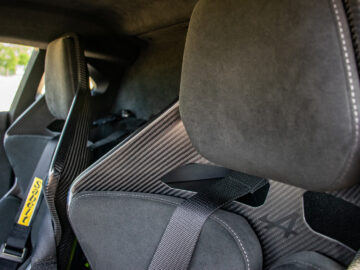
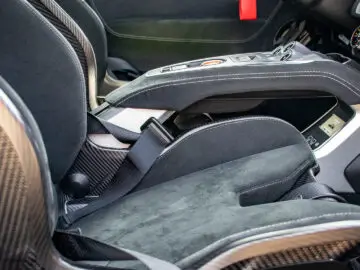
The first meters in the Alpine A110R
The better cornering starts right at the traffic circle in front of the Alpine Centre Soestdijk. When pulling away, the A110R is nicely controllable. No jerky throttle response, no jolting and bumping of the gearbox, everything is as smooth as in a “normal” A110. Until we want to leave the traffic circle, because when I want to look to see if a cyclist is coming, I only notice how much the racing belts restrict my freedom of movement. On top of that, instead of a rear window, the A110R has a carbon-fiber hood, an element that skillfully kills the A110’s already not-superior overview even further. The lack of an interior mirror does not contribute positively to this. I fervently hope no cyclist is coming and leave the traffic circle. So far, so good.
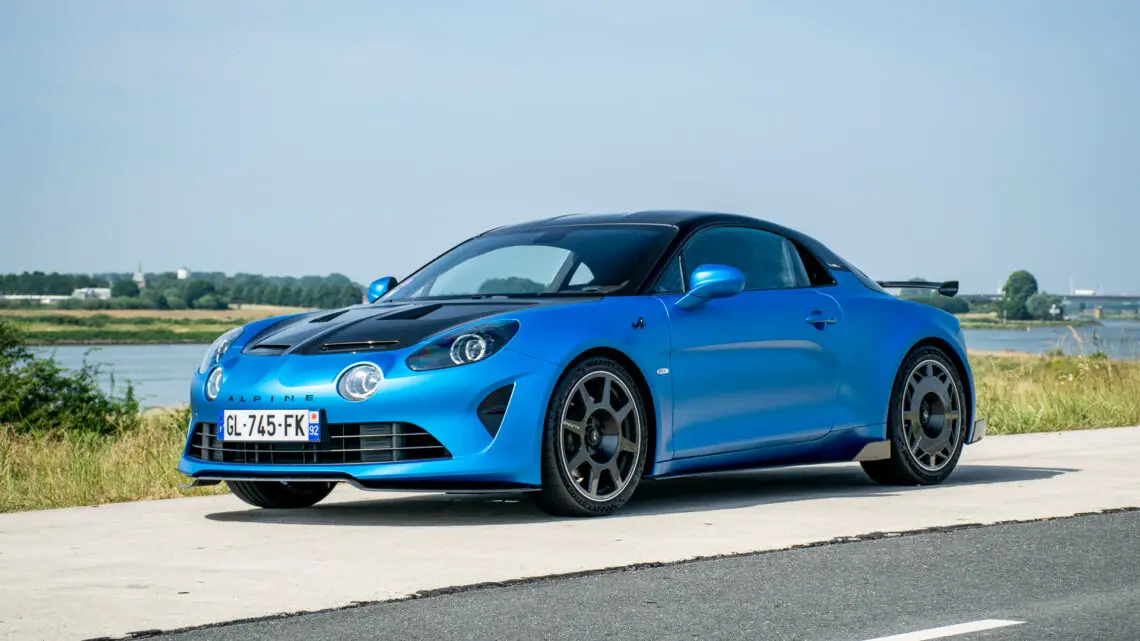
I cover the first few miles with the transmission in automatic mode and the car in comfort mode. The red sport button on the steering wheel beckons tremendously, but I hold back. During those first few kilometers, a pleasant feeling actually creeps up on me. The seats are comfortable, the seating position is good, the air conditioning is at 20 degrees and the engine hums contentedly behind my back. You do hear a little more ambient noise than in the A110, think pebbles in the wheel arches, but it never becomes distracting. The modified suspension also proves to be quite forgiving and does not transmit unevenness to you one on one. For a car that looks so intimidating and track ready, I did not expect this.
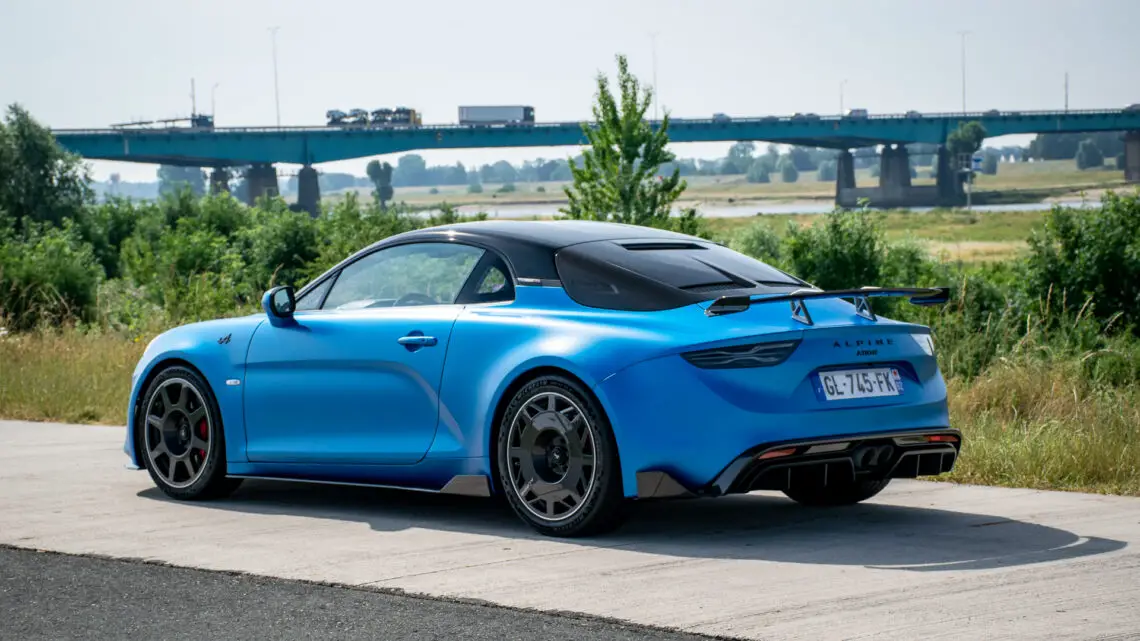
The Alpine A110R in figures
Once on the highway, the Alpine A110R and I plucked along quietly. The transmission is in seventh gear and the engine revs just under 2,500 rpm. A good time in this review to discuss the numbers and other facts. First, the engine: that is the same blown 1.8-liter four-cylinder as in the A110 GT and A110 S. That block is 300 hp and 340 Nm strong. Secretly we were hoping the A110R would also get a power boost, but no. Still, the A110R is somewhat faster than those aforementioned variants. It completes the sprint to 100 km/h in 3.9 seconds (4.2 for the GT and S), and at 285 km/h the cake is over. The A110 GT and A110 S are out of breath at 250 km/h and 275 km/h, respectively.
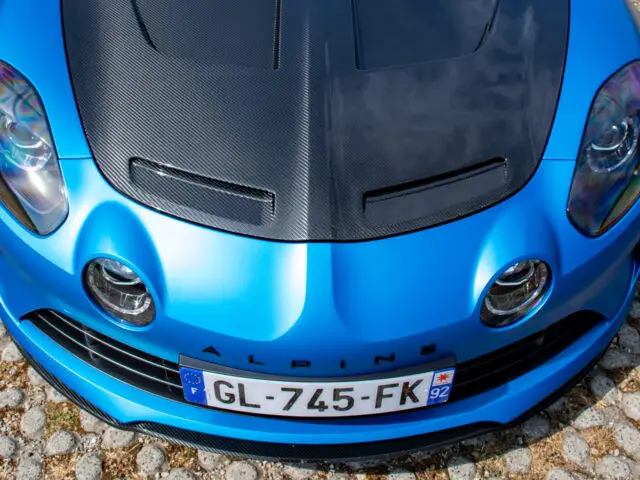

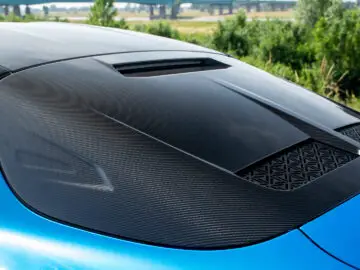
That the A110R is a bit faster is entirely due to its lower weight. In fact, roadworthy it weighs 1,082 kilograms, 34 kilograms lighter than an A110 with Aero Kit. How did Alpine pull that off? One word: carbon fiber. Lots of carbon fiber. The A110R does not exactly hide its lightweight disposition, as was evident from the first lap around the car. Here, of course, the knowledge Alpine gains in Formula 1 also comes in handy. The A110R is quite optimized aerodynamically and features unique spoiler work, with the rear spoiler attached to the car with the distinctive “gooseneck. Did someone say Porsche 911 GT3?
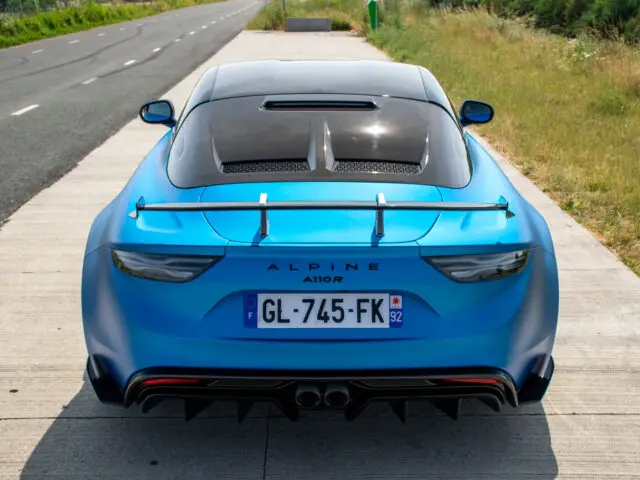

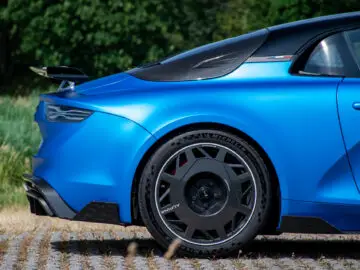
All aerodynamic modifications generate 14 kilograms of additional downforce at the front and 29 kilograms at the rear. You’re not going to notice that difference directly on public roads, but every little bit helps. What you do notice immediately are the sticky Michelin Pilot Sport Cup 2 semislicks and the biting Brembo brakes. But there is more: the Alpine A110R has manually adjustable springs and shock absorbers. It is 10 millimeters closer to the asphalt than the A110 S, but the R can be lowered an additional 10 mm if desired. To that should be added stabilizer bars that offer 10 percent more stiffness. Okay, do I have everything? Check. Good, because the highway exit is approaching.

Karting on public roads
The Lekdijk, the stretch of dike between Nieuwegein and Wijk bij Duurstede, is the playground I chose for this review of the Alpine A110R. Finally I press the sport button I’ve been saving all this time. The layout of the digital instrument cluster changes, the transmission holds the gears longer, the throttle response becomes sharper and the steering takes on more heaviness. The racer in the Alpine A110R emerges. So does my inner racer, for that matter, because I put the transmission in manual mode and accelerate. On to the first of many turns.

The four-cylinder roars it out, supported by a sports exhaust with 3D-printed end pipes. I can also hear how the air enters the engine through the intake tract, and the hiss of the turbocharger forms a piece of additional acoustic accompaniment. As a director, you feel like the conductor of this special orchestra. I let off the gas and the wastegate immediately let out a “sigh. Apply the brakes and down three gears, the transmission obeys effortlessly, and the intermediate throttle with each shift sounds almost like a good pianist playing staccato: short and powerful. I steer into the corner and it almost feels as if my hands are seamlessly connected to the front wheels, so instantly does the A110R respond to my input. After all the lead-heavy EVs that regularly come up for review on the editorial staff, I have to get used again to a car that feels so nimble and playful. This is enjoyment!
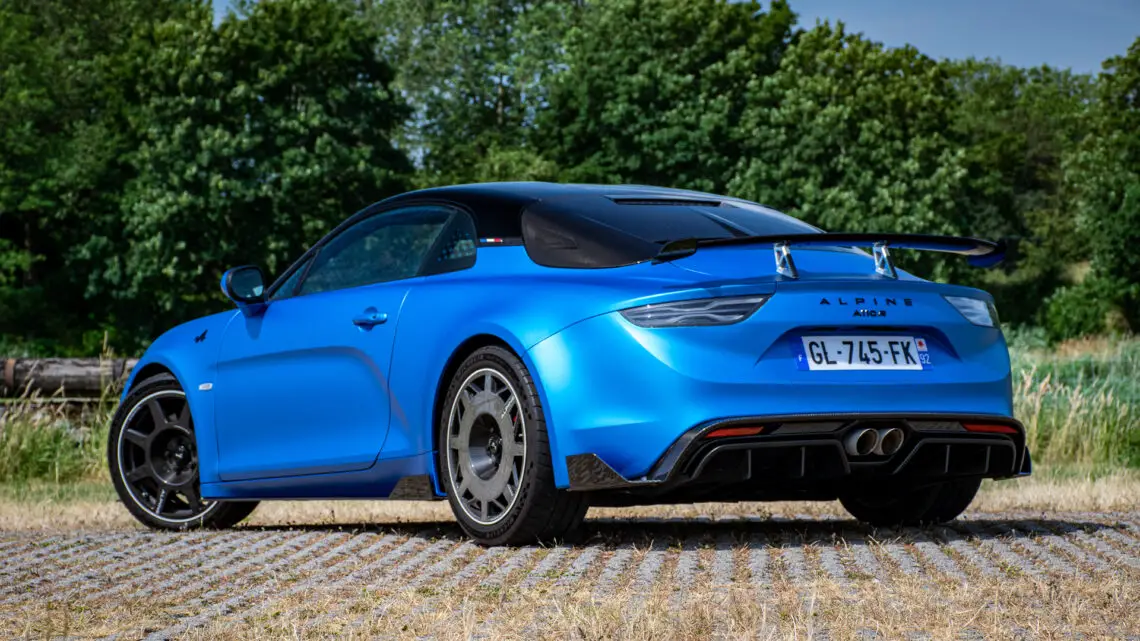
And suddenly there is the sign “Wijk bij Duurstede. In this go-kart for the public road, you string the corners together like it’s nothing. Time flies when you’re having fun. The A110R really does feel noticeably sharper and stiffer than the A110 S, which is already a notch sportier than the regular A110 and the A110 GT. As a result, the cornering speeds actually come naturally higher. Do I ever feel like I lack extra power? No, never. However, the handling of the A110R is a bit closer to that of the other variants of the A110 than I initially suspected. Therefore, do not expect a difference of night and day.

Conclusion Alpine A110R: buy or leave?
I park the car in Wijk bij Duurstede to take a moment to reflect on the drive I just took. I am already looking forward to the way back. What a delightful fun machine the Alpine A110R is. One aspect was not yet covered in this review: price. After all, carbon fiber is not free. An A110R costs a minimum of 121,990 euros. Thick 35,000 euros more than an A110S. Is it worth it? That depends entirely on how you are going to deploy the A110R. Will you also use it regularly for daily traffic or use it around town? In that case, leave that R out especially. Not because it is not easy to drive, on the contrary, but mainly because of the potential damage to all the carbon fiber. But if you use it as a weekend toy or seek the occasional track, it’s a no-brainer as far as I’m concerned. Buy that A110R, strap yourself into the driver’s seat and enjoy.

